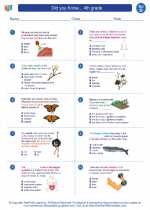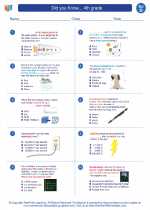Quantitative Observation
Quantitative observation refers to the objective, measurable data that can be collected using various instruments and methods. This type of observation involves numerical data and is often used in scientific research and experiments to analyze and interpret the results. Quantitative observations are essential for making accurate measurements and comparisons in the field of science.
Key Points to Remember:
- Quantitative observation involves collecting numerical data through measurements and observations.
- It is used in scientific research and experiments to analyze and interpret results.
- Quantitative observations are essential for making accurate measurements and comparisons.
- Examples of quantitative observations include measuring the length of an object, recording the temperature, or counting the number of samples in a study.
Study Guide
Here are some key questions and activities to help you understand quantitative observation:
- What is quantitative observation and why is it important in science?
- Compare and contrast quantitative and qualitative observations.
- Conduct an experiment or activity where you can make quantitative observations, such as measuring the volume of different liquids or recording the weight of objects.
- Discuss with your classmates or peers how quantitative observation is used in various scientific fields, such as biology, chemistry, or physics.
- Create a chart or graph using quantitative data to visually represent your observations and findings.
By understanding the concept of quantitative observation and practicing with real-life examples, you can develop strong analytical and observational skills in the field of science.
.◂Science Worksheets and Study Guides Fourth Grade. Did you Know... 4th grade
Study Guide Did you Know... 4th grade
Did you Know... 4th grade  Worksheet/Answer key
Worksheet/Answer key Did you Know... 4th grade
Did you Know... 4th grade  Worksheet/Answer key
Worksheet/Answer key Did you Know... 4th grade
Did you Know... 4th grade  Worksheet/Answer key
Worksheet/Answer key Did you Know... 4th grade
Did you Know... 4th grade 

 Worksheet/Answer key
Worksheet/Answer key
 Worksheet/Answer key
Worksheet/Answer key
 Worksheet/Answer key
Worksheet/Answer key

The resources above cover the following skills:
Core Ideas for Knowing Science
Life Science
Organisms are organized on a cellular basis and have a finite life span.